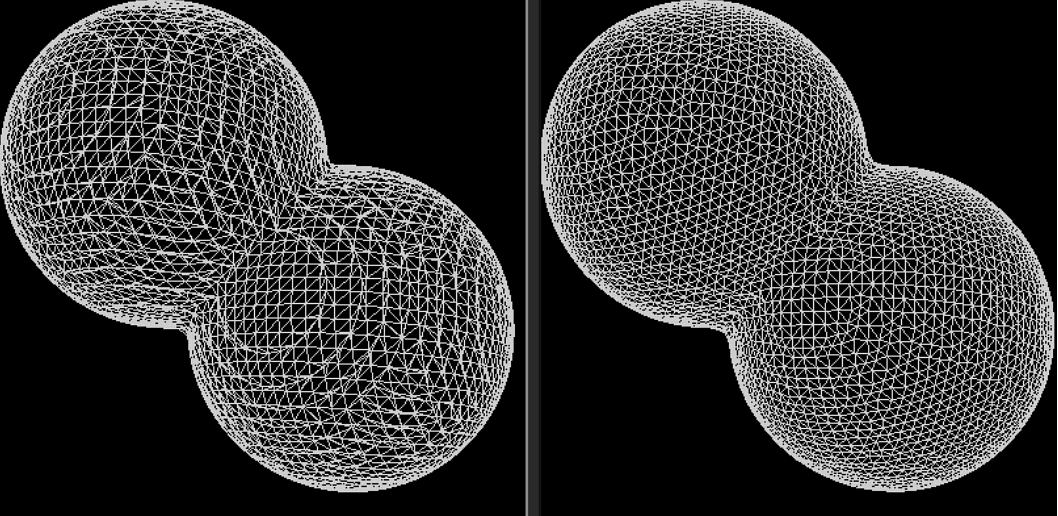In Proceedings of MICCAI
Improving Triangle Mesh Quality with SurfaceNets

Simulation of soft tissue deformation is a critical part of surgical simulation. An important method for this is finite element (FE) analysis. Models for FE analysis are typically derived by extraction of triangular surface meshes from CT or MRI image data. These meshes must fulfill requirements of accuracy , smoothness, compactness, and triangle quality. In this paper we propose new techniques for improving mesh triangle quality, based on the SurfaceNets method. Our results show that the meshes created are smooth and accurate, have good triangle quality, and fine detail is retained.
More Information
Citation
P.W. de Bruin, F.M. Vos, Frits H. Post, S.F. Frisken-Gibson, and A.M. Vossepoel,
Improving Triangle Mesh Quality with SurfaceNets,
In Proceedings of MICCAI, pp. 804–813, 2000.
BibTex
@inproceedings{bib:debruin:2000,
author = { de Bruin, P.W. and Vos, F.M. and Post, Frits H. and Frisken-Gibson, S.F. and Vossepoel, A.M. },
title = { Improving Triangle Mesh Quality with SurfaceNets },
booktitle = { In Proceedings of MICCAI },
year = { 2000 },
pages = { 804--813 },
doi = { 10.1007/978-3-540-40899-4_83 },
dblp = { conf/miccai/BruinVPGV00 },
url = { https://publications.graphics.tudelft.nl/papers/529 },
}